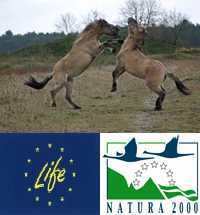 Bildrechte: NLWKN
Bildrechte: NLWKNHeck Cattle and Konik Horse Grazing
In 2006 three large paddocks were created in the central area of the former military training grounds, where today Heck cattle and koniks are kept. The goal of having these large herbivores graze here is to maintain the extremely valuable heaths and lean turf and to stop their advancing ruderalisation and shrub growth.
Heck cattle are a relatively young cattle breed. They were given their name by the brothers Heinz and Lutz Heck, who were zoo directors in Berlin and Munich in the 1920s and 1930s. During that time they began crossbreeding different cattle to create a breed that closely matched the characteristics of the globally extinct aurochs. This is also referred to as "breeding back". Heck cattle are well suited to being outside all year round and are ideal for use in landscape management.
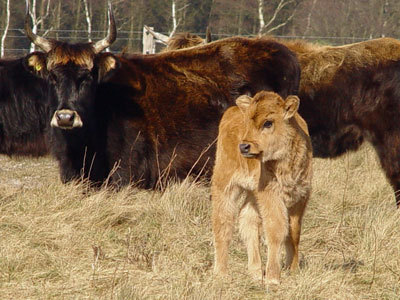 Bildrechte: NLWKN
Bildrechte: NLWKNKoniks are a primitive breed of horse that originated in Eastern Europe (mainly Poland) and is closely related to the also extinct Tarpan horse (European wild horse). The name "konik" comes from the Polish language and means "pony, small horse". These horses are also very robust and ideally suited for being kept outside all year round.
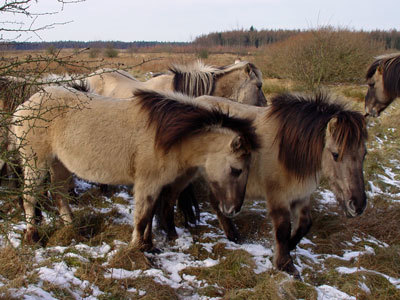 Bildrechte: NLWKN
Bildrechte: NLWKNThe sizes of the paddocks are approximately 85 hectares (southern paddock I), 76 hectares (southern paddock II) and 135 hectares (northern paddock). With its total area of approximately 296 hectares, the grazing project "Cuxhavener Küstenheiden" is among the larger projects of this type in Germany.
In 2006 a Gallagher fence nearly 13km long with four wires was erected (1.30m high with oak fence posts instead of metal poles). The power supply for both southern paddocks comes from a power supply from the Hinrich Wilhelm Kopf barracks in Altenwalde, for the northern paddock a solar system is used. Since there is no suitable water for a permanent water supply in the paddocks, wells were drilled in each paddock. The solar-powered pumps feed one frost-proof drinker for frost periods in winter, and a large drinking trough for frost free periods.
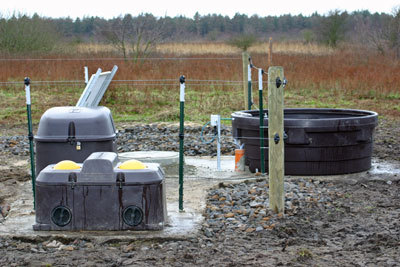 Bildrechte: NLWKN
Bildrechte: NLWKN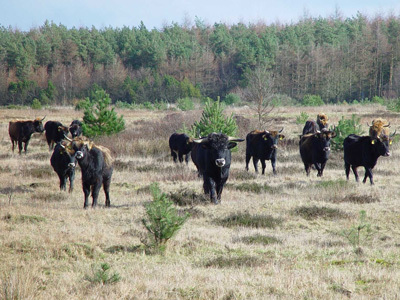 Bildrechte: NLWKN
Bildrechte: NLWKN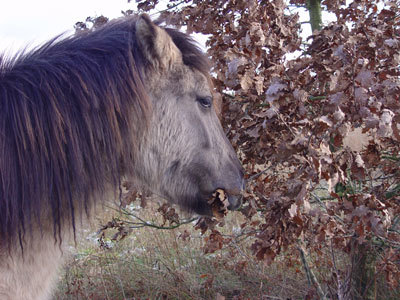 Bildrechte: NLWKN
Bildrechte: NLWKN Bildrechte: NLWKN
Bildrechte: NLWKN- LIFE Nature Project
- Project Sponsors and Financing
- Project Goals
- Project Organisation
- Location and Size
- Usage History
- Geology and Soils
- Biotope and Habitat Types
- Animal and Plant Species
- Project of National Significance
- Natura 2000, Nature Reserve
- Heck Cattle and Konik Horse Grazing
- Wisent Grazing
- Small Ponds
- Development of Forests Suited to the Location
- Removal of Small Trees and Shrubs
- Information for Visitors
Artikel-Informationen
Ansprechpartner/in:
Hannah Burmester
Nds. Landesbetrieb für Wasserwirtschaft, Küsten- und Naturschutz
Betriebsstelle Lüneburg
Adolph-Kolping-Str. 6
D-21337 Lüneburg
Tel: +49 (0)4131 2209-221


